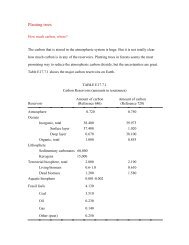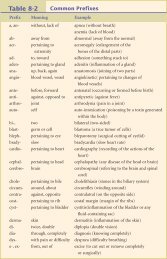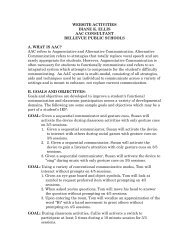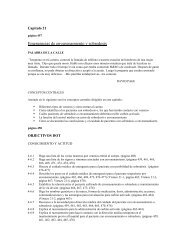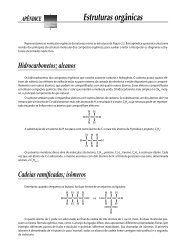chapter
chapter
chapter
You also want an ePaper? Increase the reach of your titles
YUMPU automatically turns print PDFs into web optimized ePapers that Google loves.
198 Unit Three Forces Within<br />
?S TUDENTS SOMETIMES ASK...<br />
Someday will the continents<br />
come back together and form<br />
a single landmass?<br />
Yes. It is very likely that the continents will come back together,<br />
but not anytime soon. Since all of the continents are on<br />
the same planetary body, there is only so far a continent can<br />
travel before it collides with other continents. Based on current<br />
plate motions, it appears that the continents may meet up<br />
again in the Pacific Ocean. Recent research suggests that the<br />
continents may form a supercontinent about once every 500<br />
million years or so. Since it has been about 200 million years<br />
since Pangaea broke up, we have only about 300 million years<br />
before the next supercontinent is completed.<br />
The Great Debate:<br />
Rejecting an Hypothesis<br />
Wegener’s proposal did not attract much open criticism<br />
until 1924 when his book was translated into English.<br />
From this time on, until his death in 1930, his drift hypothesis<br />
encountered a great deal of hostile criticism.<br />
To quote the respected American geologist T. C. Cham-<br />
Figure 7.7 A. The supercontinent<br />
Pangaea showing the area covered by<br />
glacial ice 300 million years ago. B. The<br />
continents as they are today. The shading<br />
outlines areas where evidence of the old<br />
ice sheets exists.<br />
A.<br />
B.<br />
Equator<br />
Equator<br />
Ice mass<br />
berlin, Wegener’s hypothesis takes considerable liberty<br />
with our globe, and is less bound by restrictions or tied<br />
down by awkward, ugly facts than most of its rival theories.<br />
Its appeal seems to lie in the fact that it plays a<br />
game in which there are few restrictive rules and no<br />
sharply drawn code of conduct.<br />
One of the main objections to Wegener’s hypothesis<br />
stemmed from his inability to provide a mechanism<br />
that was capable of moving the continents across the<br />
globe. Wegener proposed that the tidal influence of the<br />
Moon was strong enough to give the continents a westward<br />
motion. However, the prominent physicist Harold<br />
Jeffreys quickly countered with the argument that tidal<br />
friction of the magnitude that’s needed to displace the<br />
continents would bring Earth’s rotation to a halt in a<br />
matter of a few years.<br />
Wegener also proposed that the larger and sturdier<br />
continents broke through the oceanic crust, much like<br />
ice breakers cut through ice. However, no evidence existed<br />
to suggest that the ocean floor was weak enough<br />
to permit passage of the continents without themselves<br />
being appreciably deformed in the process.<br />
Although most of Wegener’s contemporaries opposed<br />
his views, even to the point of open ridicule, a<br />
few considered his ideas plausible. For these few geologists<br />
who continued the search for additional evidence,<br />
North<br />
America<br />
South<br />
America<br />
Africa<br />
India<br />
Antarctica<br />
Eurasia<br />
Tethys Sea<br />
Australia




